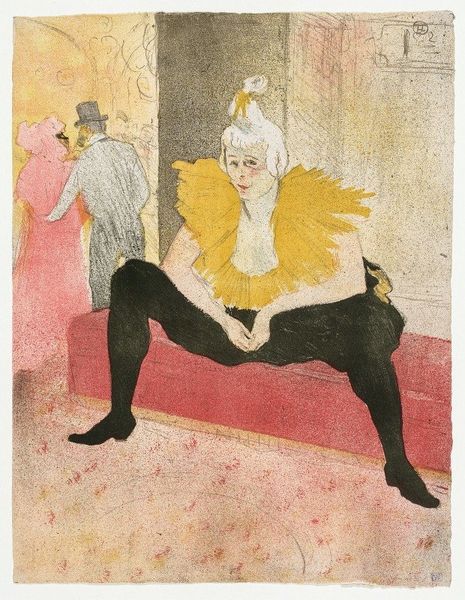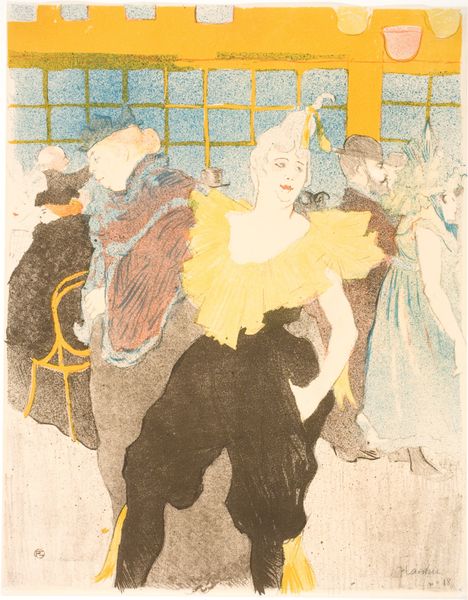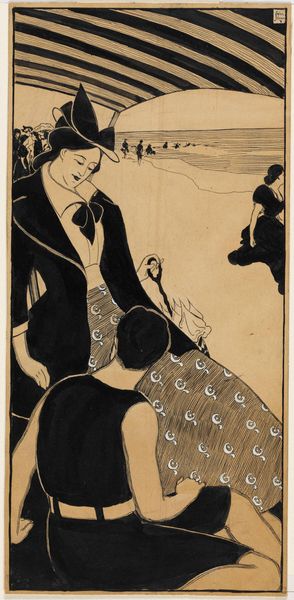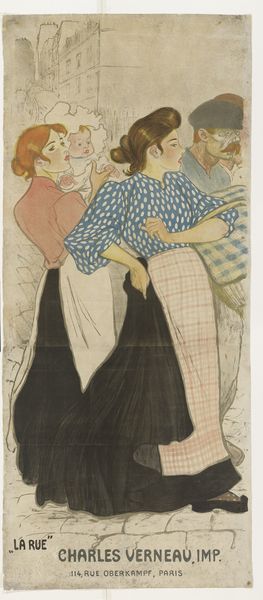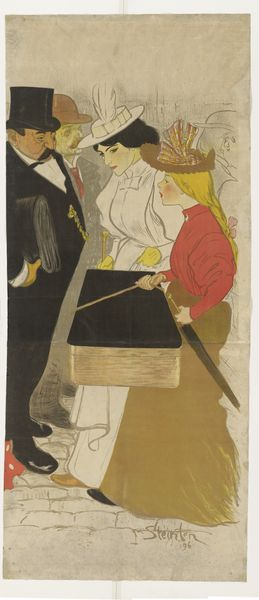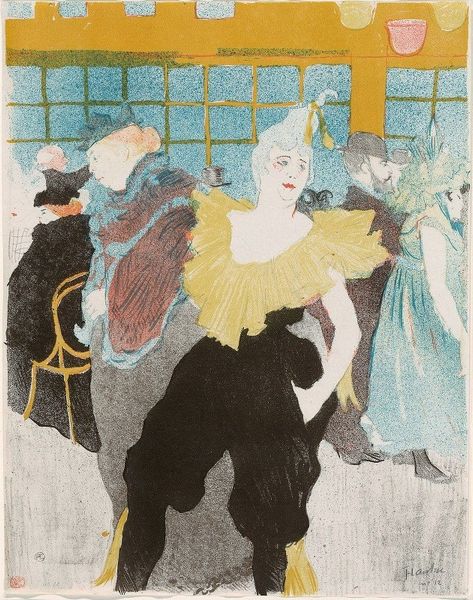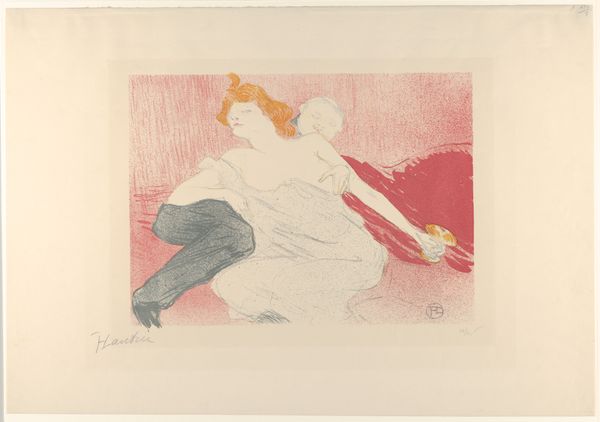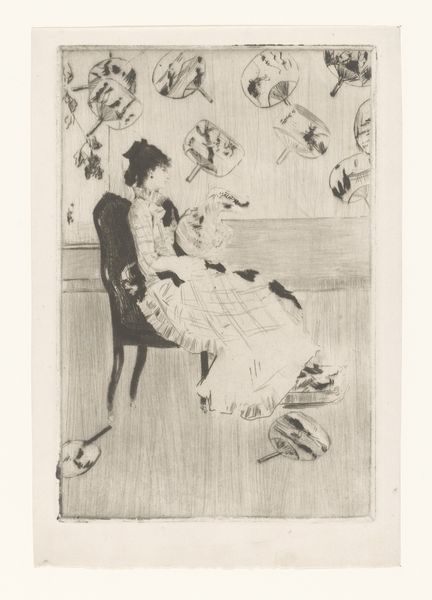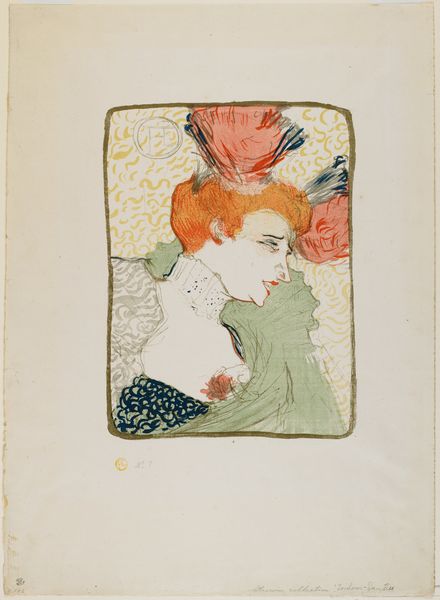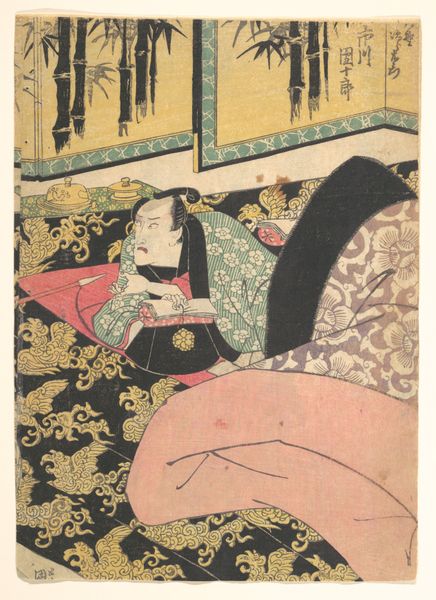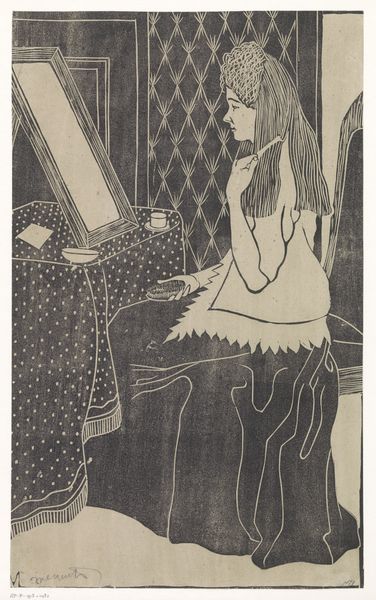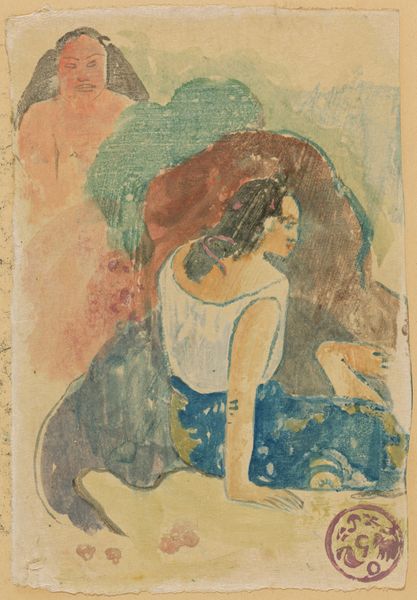
Femme au plateau, Petit Déjeuner, Madame Baron et Mademoiselle Popo 1896
0:00
0:00
Dimensions: 405 mm (height) x 524 mm (width) (bladmaal)
Curator: Lautrec always makes me feel something fierce. I mean, look at this lithograph, "Femme au plateau, Petit Déjeuner, Madame Baron et Mademoiselle Popo," dating back to 1896. Isn't there a loneliness radiating from the figure? A clown's outfit does not a joyful mood make. Editor: What strikes me first are the layers—the lithograph itself, the mixed media additions with watercolor and pastels. This layering process is so critical here. The way it captures both a flatness and a depth, almost a tactile experience in something essentially two-dimensional, emphasizes its fabricated essence, how far it deviates from portraying reality itself. Curator: Precisely! She's outside the spotlight. The figure looks both exhausted and wary. I mean, who knows what sort of evening she’s had, let alone the breakfast awaiting, but her glance speaks volumes. Almost a weary resignation, as if life itself is the stage and the costume's now smothering her. Editor: I'd like to address the very concept of artistic labor embedded in these techniques and choices. The printmaking—a multiplication, an industrialized form—intersects with the supposedly unique aura of "art," while his touches of color are almost as an after thought to it. It is almost the same alienation they each might be feeling toward labor of performing. Curator: Yes! This piece walks a fascinating tightrope. It lures you in with supposed glamour and then quietly unravels. The seemingly effortless line work of the lithograph combined with that rather brutally applied colour palette creates a tension – almost an existential tug-of-war. Editor: Absolutely, but this 'tension' also manifests from its role within commercial contexts. I believe it emphasizes not only an engagement in mass culture through print production but, more tellingly, with what that means to all of these figures at play in making art available or making their persona visible for consumption's sake, each layer speaking volumes to the business side. Curator: Beautifully said, that commercial reality—it echoes within that poignant gaze and speaks even beyond those printed lines, eh? Makes you question who exactly is the subject here? Or rather, *what* exactly. It certainly does resonate deeply. Editor: It's not about "is this a real person," it's more about unpacking how the means by which a depiction like this enters society. That interplay, the mechanical touching the artistic, has opened new pathways for inquiry. Thanks for opening this can, I feel as if that layer-on-layer idea can never just let anything sit.
Comments
No comments
Be the first to comment and join the conversation on the ultimate creative platform.
